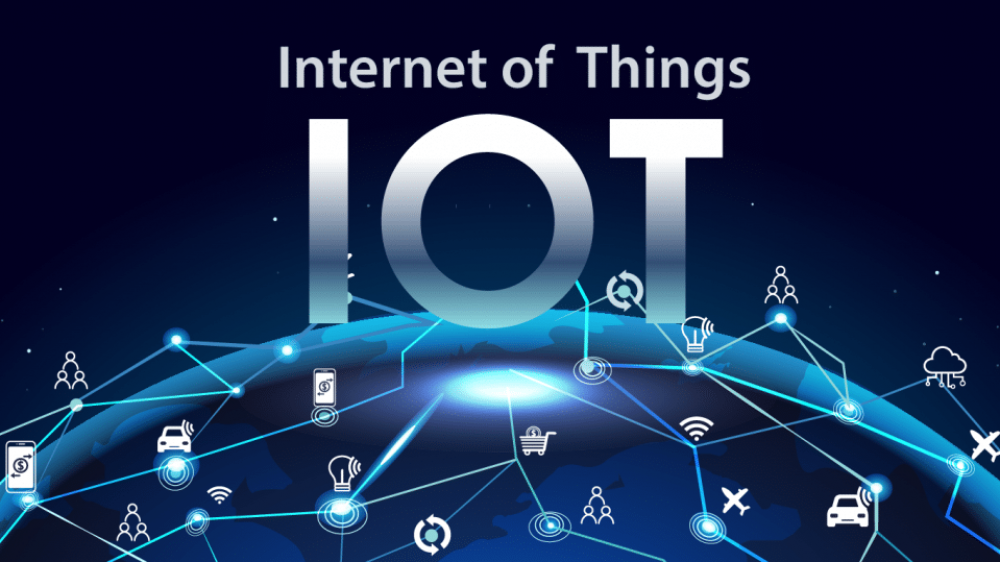
We live in a world where edge computing is becoming the norm.
Think about it: phones, cars, computers, and refrigerators can all connect to the Internet.
How is this possible? The Internet of Things (IoT) makes it possible.
However, it does not happen without a challenge: managing the massive data volumes generated by these devices.
Processing this massive data in the cloud can be challenging due to latency and bandwidth constraints.
Traditional cloud computing needed an upgrade: faster processing, real-time analysis, decision-making capabilities, data management, and device connectivity while reducing internet bandwidth and latency strain.
This is where edge computing comes into play. Edge cloud computing reliably and safely processes sensitive data and powers critical systems in hospitals, factories, and shopping areas.
This article discusses edge computing, its key benefits and challenges, and how it will power the future of IoT.
RELATED BLOG POSTS:
- 10 PROVEN PRACTICES FOR MOBILE APPLICATION DEVELOPERS
- 7 BEST BENEFITS OF A WEBSITE FOR SMALL BUSINESSES
- 7 GAME-CHANGING UPDATES FOR FRONTEND DEVELOPERS
- MASTERING WCAG 2.1: A DEVELOPER’S GUIDE TO BUILDING ACCESSIBLE WEB EXPERIENCES
What Is Edge Computing?
Think of edge computing as tiny, energy-efficient computers near where data is created, such as sensors on a factory floor or cameras in a city.
Edge computing involves a network of edge devices, such as routers, gateways, and sensors, communicating with each other, the cloud, and local computing and storage resources. These “edge devices” process data locally and make decisions quickly.
Instead of sending all the raw information to a distant cloud, they only send the important stuff. This is much faster and saves a lot of internet traffic.
However, edge cloud computing doesn’t replace the traditional cloud; it’s like an extension. It brings the cloud’s power closer to the action, making everything more responsive and efficient.
Edge computing enables decentralized computing, making it easier to manage the significant quantities of data generated by modern applications.
Edge Computing and the Internet of Things (IoT)
Imagine a world where every device, appliance, and mode of transportation–even a lightbulb–connects to the Internet. That’s the Internet of Things (IoT) at work.
IoT is the term used to describe the ability to connect devices and networks with the Internet.
Edge computing is like having mini-computers near these devices. It allows data to be quickly processed right where it’s generated, leading to faster responses, better decisions, and smoother operations.
For example, think of self-driving cars reacting instantly to events around them or smart factories adjusting production immediately.
Benefits of Edge Computing
Here are a few benefits of edge computing:
1. Reduced latency
Edge computing reduces latency for IoT applications.
In traditional cloud computing, data must travel from its origin to a central server, which could be thousands of miles away, causing delays.
When data is stored and processed at or near the source, edge computing significantly reduces the distance and allows businesses to experience faster application performance and more responsive systems.
This is critical in telemedicine, smart grids, and online gaming, which rely on time-sensitive data.
2. Increased bandwidth efficiency
Edge computing increases bandwidth efficiency for IoT applications. Less data needs to be sent to the cloud, which can save bandwidth and reduce costs.
Millions of devices generate data. Edge computing, which distributes the workload, is the ideal solution for IoT ecosystems because it reduces strain on central systems.
3. Improved security
Edge computing improves the safety of IoT applications.
Data processed locally is less likely to be compromised because it limits possible data breaches with decentralized data processing and storage. Edge computing prevents widespread damage by containing the breach to a local node instead of compromising the entire system, which happens in centralized systems.
4. Enhanced scalability
Edge computing enhances the scalability of IoT applications. Its devices can be deployed closer to the data source, easing the load on the cloud.
Nodes and new edge devices can be added without a strenuous overhaul of the centralized infrastructure, making it easier to expand data processing.
5. Enhanced flexibility
Edge computing improves the flexibility of IoT applications. Its devices can be configured to meet each application’s needs.
6. Local data processing and analytics
Edge computing allows for real-time local data processing and analytics. Data can be processed and analyzed without being sent to the cloud, improving performance and reducing latency.
7. Enhanced decision-making
Edge computing provides real-time insights, which improves decision-making. This can be helpful for applications that require quick decision-making, such as fraud detection and predictive maintenance.
8. Reduced costs
Edge computing reduces costs for IoT applications. Since data is processed locally, less data is sent to central servers, reducing the cost of additional bandwidth.
Edge computing also allows organizations to avoid expensive centralized system upgrades and reduce reliance on more expensive cloud servers for data processing.

Applications of Edge Computing
1. Self-driving cars
Edge computing improves the performance of self-driving cars, enabling them to make decisions more quickly and respond more effectively to environmental changes.
These vehicles quickly respond to driving conditions, such as obstacles, traffic signal changes, and other drivers’ erratic behavior.
Edge computing also allows autonomous, self-driving vehicles to send only the most critical information or insights to the cloud for processing instead of all raw sensor data, reducing data transmission costs.
2. Smart cities
Edge computing improves efficiency and sustainability. Innovative city applications can better use resources and reduce energy consumption.
For example, traffic monitoring and management in real-time reduces congested traffic and optimizes traffic flow.
3. Robot-assisted surgery
Surgeons use robotic devices to perform less invasive and shorter procedures. Edge computing allows for smaller incisions and gives the surgeon a better view of the site without the surgeon having to stand for extended periods.
4. Entertainment streaming
Edge computing ensures consumers have high-quality content when streaming platforms like gaming services, Netflix, Hulu, or Amazon Prime Video.
Edge servers are strategically placed closer to users and deliver streaming content almost instantaneously, enhancing clients’ viewing experiences.
Also, quicker data transmissions, provided by edge computing, are essential for real-time interaction and gameplay.
Challenges and the Future of Edge Computing
Edge computing requires a reliable and secure network infrastructure to function correctly, which can be challenging in rural areas. Remotely located devices and those in untrusted environments require a blend of cyber and physical defenses.
Security updates also become more complicated due to heterogeneous hardware, software, and network combinations. IoT and edge computing security must be seamless from the cloud to all possible edge instances.
We can expect to see more edge devices deployed and edge cloud computing used for a broader range of applications. With superfast 5G networks, edge computing will improve further, allowing for more innovative and responsive devices. Companies specializing in IoT will be key to this development.

Conclusion
Edge computing is an incredible shift in how data is collected, processed, analyzed, and used. It ensures real-time decision-making, enhances security, and reduces reliance on extensive cloud resources. With its vast and varied applications, edge computing processes data faster and reduces latency in multiple industries, including automobiles, retail, and healthcare.
By embracing and implementing edge cloud computing, you will be better prepared for tomorrow’s technological demands, expectations, and opportunities.
Edge cloud computing is projected to become increasingly essential. It will be a central component of modern enterprise infrastructure, enabling organizations to be more competitive, secure, and agile.
What are your experiences with edge computing?
READ ALSO: EFFECTIVE WAYS TO UNDERSTAND THE USE OF AI IN CYBERSECURITY

